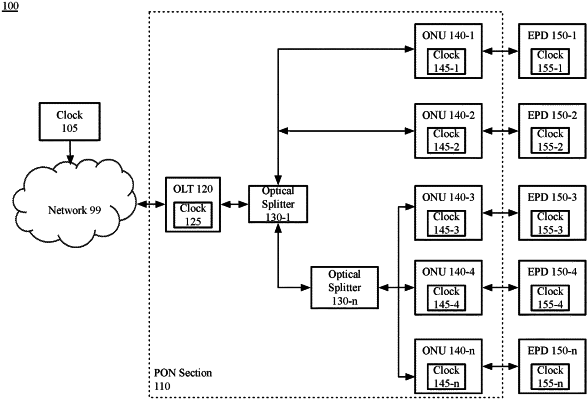| CPC H04J 3/0667 (2013.01) [H04J 3/0644 (2013.01); H04Q 11/0067 (2013.01); H04Q 2213/1336 (2013.01); H04Q 2213/13361 (2013.01)] | 19 Claims |

|
1. A method, comprising:
communicating a packet between first and second computing devices in a network section, the network section being a separate portion of a network system;
determining a residence time of the packet within the first and second computing devices in the network section, the residence time based on a first section clock associated with the first computing device in the network section and a second section clock associated with the second computing device in the network section, the first and second section clocks being disassociated from first and second system clocks that are outside of the network section, wherein determining the residence time of the packet comprises:
by the first computing device:
receiving, from a third computing device of the network system, the packet, the packet comprising a field;
timestamping a first ingress time of the packet;
determining a transmission time to the second computing device;
modifying the field of the packet using the first ingress time and the transmission time; and
transmitting the packet to the second computing device of the network section;
by the second computing device:
timestamping a second egress time of the packet from the second computing device of the network section;
modifying the field of the packet using the second egress time to result in a second modified field that indicates the residence time of the packet within the first and second computing devices in the network section; and
transmitting the packet to a fourth computing device of the network system; and
synchronizing the first and second system clocks based on the residence time of the packet within the first and second computing devices in the network section.
|